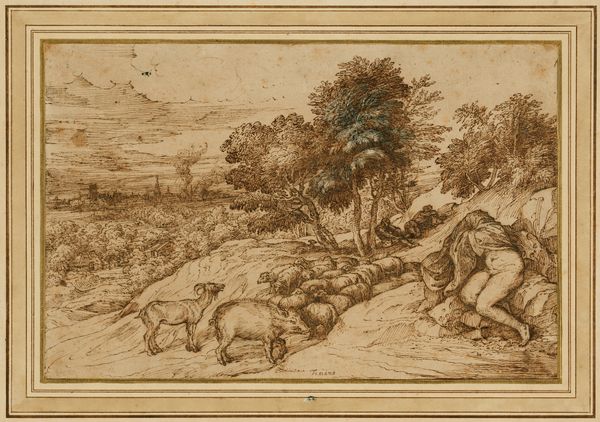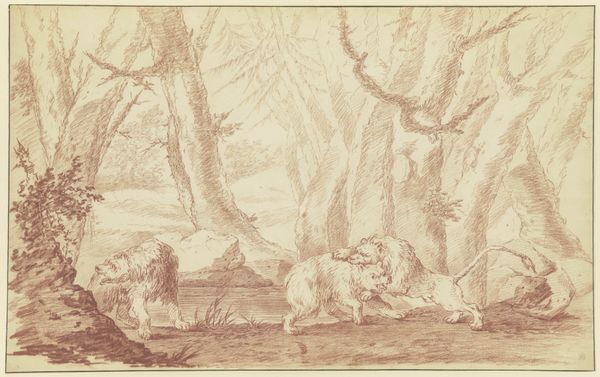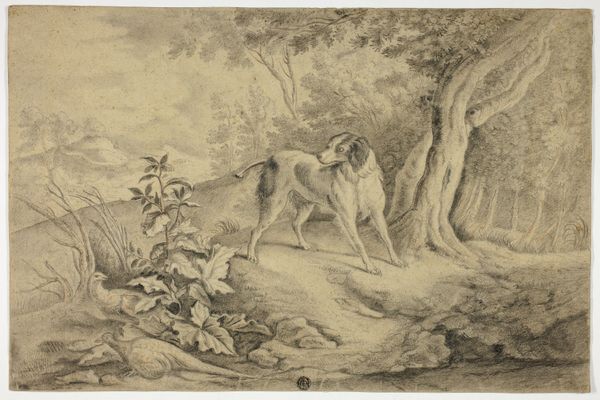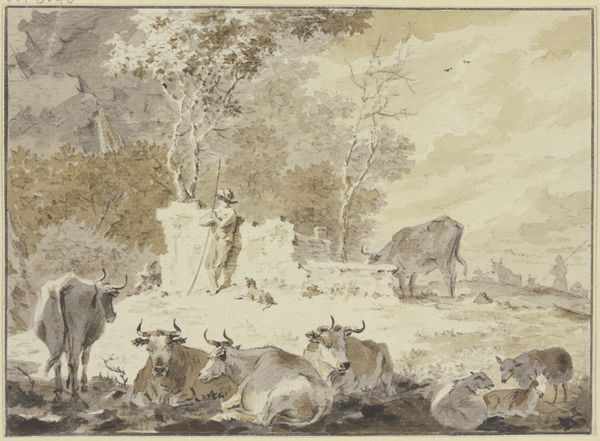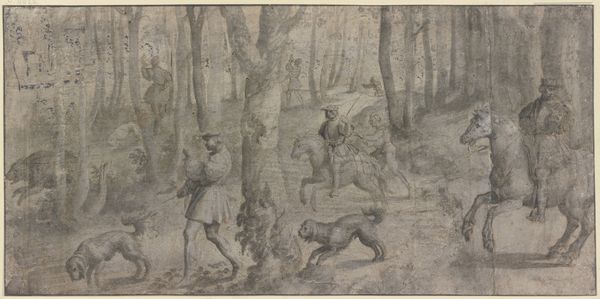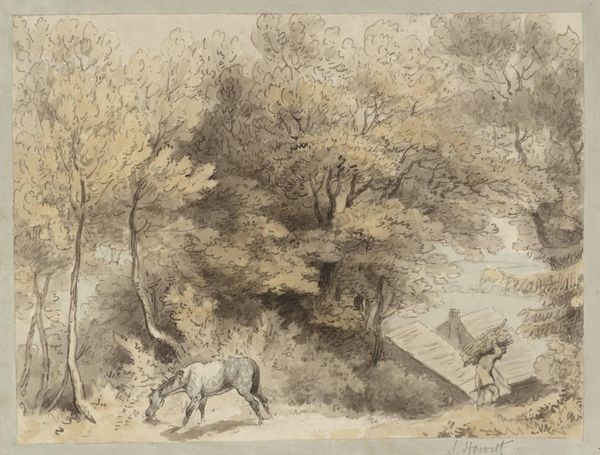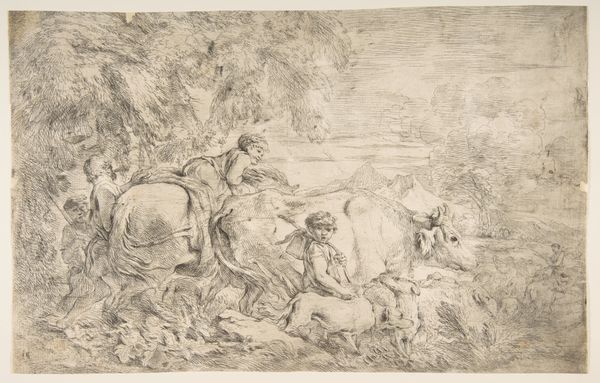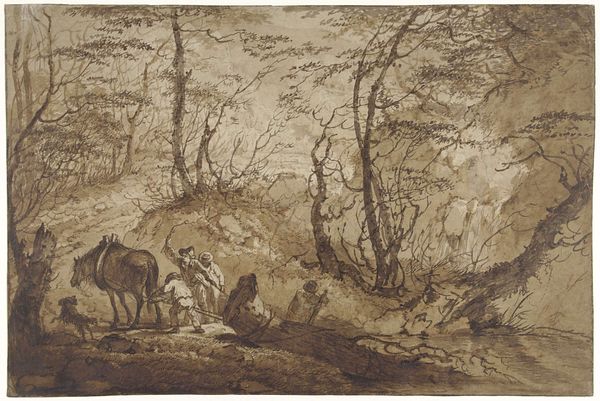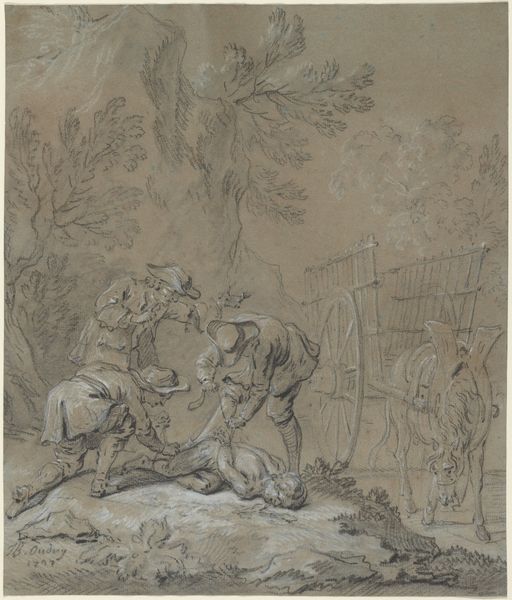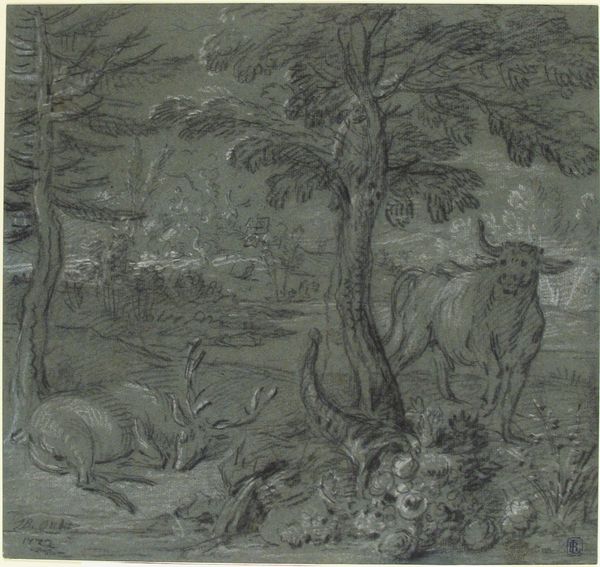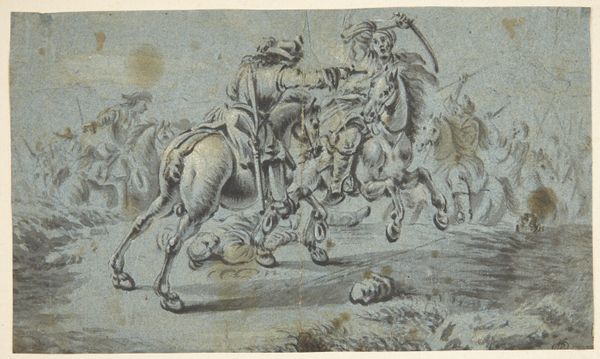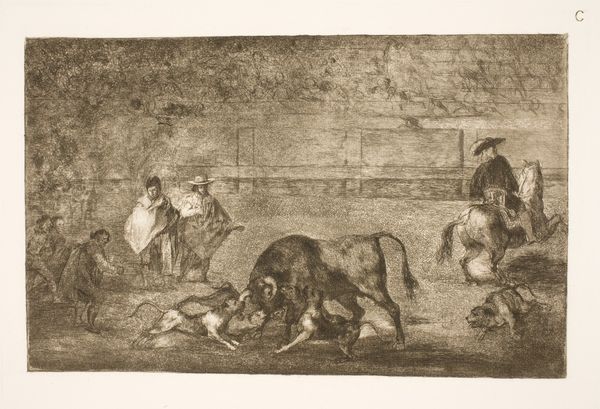
Hunters with Dead Game in a Landscape 1600 - 1800
0:00
0:00
drawing, print, pencil, charcoal
#
tree
#
drawing
#
baroque
#
animal
# print
#
dog
#
landscape
#
bird
#
charcoal drawing
#
figuration
#
pencil
#
horse
#
men
#
genre-painting
#
charcoal
Dimensions: 9 3/4 x 15 13/16 in. (24.8 x 40.1 cm)
Copyright: Public Domain
Editor: This is "Hunters with Dead Game in a Landscape," a drawing done sometime between 1600 and 1800, attributed to Giovanni Agostino Cassana, currently held at the Metropolitan Museum of Art. It has this hazy, almost dreamlike quality... so, what do you see in it? Curator: I see echoes of classical hunting scenes, but filtered through a Baroque lens, almost like a half-remembered myth. Consider the symbolism embedded in the hunt itself. Editor: Like, the power dynamics? Curator: Yes, and deeper still! Think of it as a microcosm of life, death, and the relationship between humans and nature. Note the men, the dogs, and the game itself—how does Cassana arrange these elements? Editor: The dead animals are very prominent. Almost… staged. Curator: Precisely. Dead game has always served as a visual signifier for provision and bounty, connecting to primal ideas about nature’s resources, and social hierarchies—but is there also something else in those lifeless eyes, and the dog’s exhausted repose? Editor: A feeling of melancholy? Curator: Perhaps even an early unease about humankind's impact? This piece seems to speak to our role in the natural order. Though hunting imagery persisted throughout art history, the meaning, much like the gaze of the viewer, continues to shift over time. What's striking to you most now? Editor: How even a simple scene, like hunters with their kill, can be packed with layers of meaning, depending on the historical moment... Curator: Absolutely. Visual symbols resonate far beyond their immediate representation; their cultural memory evolves as our perspectives shift, enriching and sometimes troubling our relationship to the images of the past.
Comments
No comments
Be the first to comment and join the conversation on the ultimate creative platform.
